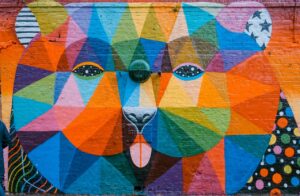
Graphic design is an essential part of modern-day communication. Whether you’re creating a logo, designing a website, or putting together a presentation, effective graphic design can make all the difference in communicating your message clearly and effectively. But for beginners, the world of graphic design can be overwhelming. With so many tools, techniques, and resources available, where do you even begin? In this article, we’ll cover the basics of getting started with graphic design.
Tools
First things first, you’ll need the right tools to get started with graphic design. The good news is that you don’t need to spend a fortune on expensive software to create stunning visuals. In fact, many professional designers use free or low-cost tools to create their designs. Here are some of the most popular tools for graphic design:
- Adobe Creative Suite – Adobe Creative Suite is a collection of professional-grade design software, including Photoshop, Illustrator, and InDesign. While Adobe Creative Suite can be expensive, it’s a worthwhile investment for those who plan to pursue graphic design as a career.
- Canva – Canva is a popular web-based design tool that allows users to create designs for social media, presentations, and more. Canva offers both free and paid plans, with the paid plans providing access to additional features and resources.
- GIMP – GIMP is a free, open-source image editing tool that offers many of the same features as Adobe Photoshop. While GIMP may not be as powerful as Adobe Photoshop, it’s a great option for those who are just starting out in graphic design.
- Inkscape – Inkscape is a free, open-source vector graphics editor that’s ideal for creating logos, illustrations, and other graphics. While it may not be as well-known as Adobe Illustrator, Inkscape offers many of the same features and is a great alternative for those who can’t afford Adobe Illustrator.
Techniques
Now that you have your tools, it’s time to learn some basic graphic design techniques. Here are some of the most important techniques to keep in mind:
- Composition – Composition is the arrangement of elements in a design. A well-composed design is visually appealing and easy to read. When creating a design, think about the hierarchy of the elements you’re including and how they work together to create a cohesive whole.
- Color theory – Color theory is the study of how colors interact with each other. Understanding color theory is essential for creating visually appealing designs that convey the right mood and message. When choosing colors for your design, think about the emotions and associations that different colors evoke.
- Typography – Typography is the art of arranging type. The right typography can make a design more legible, aesthetically pleasing, and effective in communicating your message. When choosing fonts for your design, think about the hierarchy of the text and how it works with the other elements in the design.
- White space – White space, or negative space, is the area around the elements in a design. Well-utilized white space can make a design more visually appealing and easier to read. When creating a design, think about how you can use white space to create balance and harmony.
Resources:
- Online tutorials: There are countless online tutorials available on graphic design. You can find tutorials on specific software, techniques, and design principles. Some of the best websites for online tutorials include Lynda.com, Udemy, and Skillshare.
- Design blogs: Design blogs are a great resource for keeping up-to-date with the latest trends and news in the world of graphic design. Some of the best design blogs include Creative Bloq, Smashing Magazine, and Design Milk.
- Online communities: Joining online communities can be a great way to connect with other graphic designers and learn from their experiences. Some of the best online communities for graphic designers include Behance, Dribbble, and Reddit’s Graphic Design community.
- Design inspiration: Inspiration can come from anywhere, but there are specific websites and resources dedicated to providing design inspiration. Some of the best resources for design inspiration include Pinterest, Dribbble, and Behance.
In conclusion, getting started with graphic design requires a combination of tools, techniques, and resources. With the right tools, you can create stunning designs using software like Adobe Creative Suite, Sketch, or CorelDRAW. Understanding color theory, typography, and layout and composition are essential techniques for creating visually appealing designs. Finally, resources such as online tutorials, design blogs, online communities, and design inspiration websites can help you improve your skills and stay up-to-date with the latest trends in graphic design. With practice and dedication, anyone can become a skilled graphic designer.




